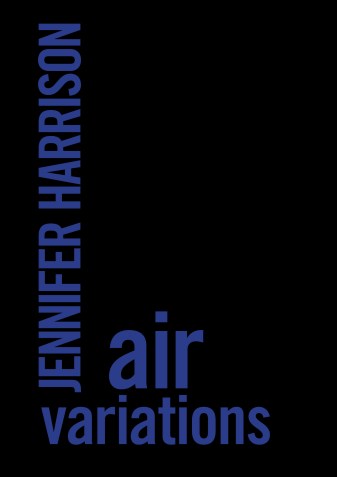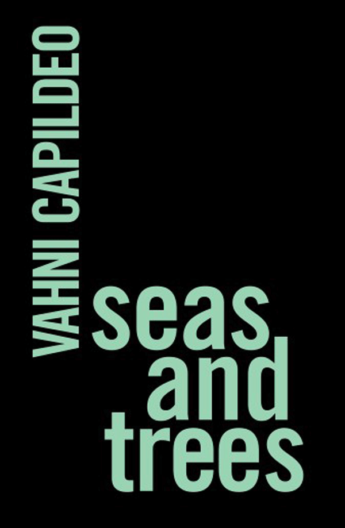

Seas and Trees
by Vahni Capildeo
Recent Work Press, 2018
Air Variations
by Jennifer Harrison
Recent Work Press, 2018
Numbers 8 and 10 in the IPSI (International Poetry Studies Institute) limited-edition chapbook series, Vahni Capildeo’s Sea and Trees and Jennifer Harrison’s Air Variations comprise crystalline, eidetic poems that attest to language’s capacity to renew and reinvigorate.
Trinidadian-British poet Capildeo’s Sea and Trees celebrates language itself – in its mutability and its material suggestiveness; its relationship to the world. Indeed, the natural world is signalled as a concern of both collections, by way of their titles, yet both demonstrate an extensive and transitory scope, along with a tendency to play.
In addition to each author’s prize-winning works in poetry, Capildeo has worked as a lexicographer at the Oxford English Dictionary, and Australian poet Harrison is a neuropsychiatrist. These biographical details feel germane in how they resonate with the sense of the two poets’ interest and fluency in realms of language broad and specialised.
In Capildeo’s ‘From Journal of Ordinary Days’, we read:
Sometimes I dream in a language that is mine only by scratches, but I can get the tune of it, a whole conversation between strangers friendly to each other, dawdling behind me somewhere outdoors, a sandy cone of syllables rising and falling, whole sentences coming smattering to the surface from an occluded source.
Images such as Capildeo’s ‘sandy cone of syllables’ give language a concrete, textured presence (even, as here, in its obliqueness), in ways observed across the collection. Indeed, the poems often focus acutely on sensory perception. In the first section of the sequence ‘After a Hymn to Aphrodite’ (‘I. That Voice Revises Several Languages’), Capildeo writes:
[ … ] Don’t we think of light and warmth together, cold rock carries no weight, no, interstellar space cannot impress us – to my knowledge. And if we put our skates on? Though unplanned, each ecstasy’s, each hesitation’s, trace does cut some ice, in sharpened progress curved again by lines on whiteness.
Here the attention to language concerns the colloquial, with the idiomatic ‘put our skates on’ – move, hurry – set in the poem’s vivid, tangible space, where actions are in negotiation with atmosphere.
There is also an acute interest in the intricacies of language – its composition and junctures – in ‘Vowel Poem: Albedo’, which begins:
Will you tell me a word so beautiful that mourning yields up its you to life an o towards an r, or is a vowel’s ghost so powerful that mourning invests with amethyst the lily fields of dawn?
The poems are often comical, wry. The next section of ‘After a Hymn to Aphrodite’ (‘II. Put the Girls in Florals’) opens:
Easter tide these trees are showing off their reproductive organs mostly like a froth and creamy dazzle all over themselves, unstoppable (how confusing).
The poem itself dazzles with its effervescent, playful portrait of the trees ‘displaying airy brilliance sheer of fruit’; there is ‘something dancing: / a heart’ (these latter lines are also indicative of the poems’ playful reworking of the kinds of abstractions that abound in clichéd expression).
‘For Adjectives are one Road Cut into the Precipice Bordering Perfection’ offers a close reading of colour, association and translation:
I saw a sky the colour only of bluebells the clear blue loved, reserved, only for bluebells for imaginary equatorial cumulonimbus bluebells – little like the actual absent weak-stemmed lilac flowers – If you see, we have that reading in common, bleu celeste celestial blue
There is also a clear sense of dialogue with discourses on poetry – its dictums and tendencies. ‘Salthill Blue for Mr Laughlin’ opens:
Thinking unlike a poet, quit making it new or dragging netted memories for the breathless why
Veering by Pound’s often-cited maxim, and rejecting affinities for nostalgia and earnest or precious breathlessness in verse, Capildeo offers less of an ‘ars poetica’ than the poem might initially motion as it shifts back to a sequence of concrete images:
this milky blue is also taffeta, a sheen of pouring fabric beyond a purchaser’s means. The sea creeps up on walking, on the unsinkable sun, shoes unburying seaweed, sandworms burrowing down.
A similar sense of vim threads through Harrison’s poems, which, like Capildeo’s, are strikingly polished and musical in their composition. Air Variations opens with
‘I Topiary’, where a quiet energy hums through an associatively expansive garden space:
he cuts the hedge into a flat top the bay tree and olives into disco balls clipping and trimming paring and shaving he spends all day on his version of a city a border collie lies nearby ticdreaming and outside in the street a neon blue ford
In the same poem, a succession of silhouettes produce a striking alchemy:
shadow and cone oblong circle and cube
emerge into clipped form distempered
the lavender now a hard blue spoon
Harrison’s poems are consistently rich in their immediate and emotional atmospheres, as we see too in ‘VII Scrap Yard’, with its ‘swash of autumn pear leaves meant to yellow / fall without attention’. The poem closes:
yes this is another kind of swimming out here alone beyond the lovely reef and did you not expect it to be cold even though that shard of memory came so suddenly from nowhere like a psalm of the past piercing the heart of breath?
A strong sense of place often figures, along with the presence of interlocutors – both human and cultural. In ‘II My Cousin Rachel: The Movie’, Harrison writes:
Afterwards none of us liked the film we Said all words felt sharp a little unsafe we embraced lightly the night’s aftershine thimbling from a thin quarter moon gloom emptying us home through manicured streets sleeping birds empty shops in pirouette
This careful pacing and filmic sequencing of detail and view – achieved through the poems’ artful structuring and lineation – extends across the collection. In ‘XII Emily Dickinson: The Movie’:
squares of sunlight appeared appositely in windows and phantoms slipped in and out of the fascicles my favourite part was how she sewed her pages together a large blunt needle pushed pulled through paper as though paper was the skin of herself
At each turn these collections are ultimately joyful, even as they elicit various moods. Capildeo’s, for instance, opens with a sense of menace: ‘The trees had evolved to eat other trees. / That this happened at the end of a garden. / This was first noticed in a small tree’s wincing’ (1). The chapbooks provide compelling and rewarding samples of the poets’ work. Poems in Seas and Trees appear in Capildeo’s collection Venus as a Bear (Carcanet, 2018) – true to IPSI’s intention that the chapbooks offer more than might appear from any one poet in a single journal issue, ahead of publication in book form.
IPSI’s slim, smartly produced volumes showcase two invigorating voices, inviting further or renewed engagement with Capildeo, Harrison and each poet’s luminous, vitalising music.









